“Pat led. He spoke directly and honestly with you. It’s hard to quite describe something like ‘presence.’ Physically, he was a big man, an immaculate dresser, and always, when he’d come into a room, it was as if he knew what he was doing.”
Those words about the late Pat Quinn were spoken by Hall of Famer Bobby Clarke, who played against him, and then was coached by the “Big Irishman” when he moved behind the bench. You will be hard-pressed to find somebody in the hockey world that has a bad thing to say about Quinn. He was a natural-born leader, whether it was while he had the skates on, behind an NHL bench, or in the executive’s suite.
Leadership Roots Planted on the Ice
Quinn was born in Hamilton, Ontario, on Jan. 29, 1943. Athleticism ran in his family as his cousin “Big” John Quinn was a professional wrestler who once headlined Madison Square Garden in a world title match against the legendary Bruno Sammartino.
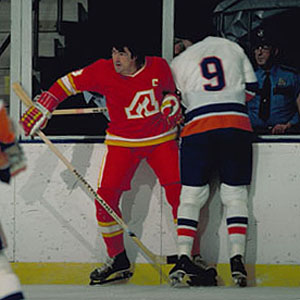
The young defenseman began his junior career in 1958, spending time with the Hamilton Tiger Cubs and Hamilton Kitty B’s in the Ontario Hockey Association (OHA). Quinn was offered a full scholarship to attend Michigan Tech but could not play in the NCAA because he had already signed a contract with the Detroit Red Wings. So, he headed to the Central Alberta Hockey League (CAHL) and joined the Edmonton Oil Kings. He was teammates with future Hall of Famer Glen Sather, and they won the 1963 Memorial Cup together.
Quinn turned pro for the 1963-64 season and bounced around the minor leagues, including the Eastern Hockey League (EHL), Central Hockey League (CHL), and Western Hockey League (WHL). He finally made his NHL debut for the Toronto Maple Leafs on Oct. 13, 1968, against the Red Wings. He played 99 regular-season games for the Maple Leafs over two seasons. His most memorable moment with Toronto came during the 1969 Stanley Cup Playoffs against the Boston Bruins. Quinn threw an open-ice check on superstar defenseman Bobby Orr that knocked him unconscious and sparked a bench-clearing brawl.
The Vancouver Canucks selected Quinn during the 1970 NHL Expansion Draft. He played 133 games over the following two seasons before being claimed by the Atlanta Flames in the 1972 NHL Expansion Draft. He spent the final five seasons of his playing career with the Flames. A severe ankle injury forced early retirement in 1977. The large defenseman had his best offensive season in 1973-74 by setting career-highs in goals (five), assists (27), points (32), and plus/minus (plus-16).
Building a Legacy Behind the Bench
Quinn’s longtime coaching career began in 1977 when Philadelphia Flyers’ head coach Fred Shero added him to his staff. The following season, he was named the head coach of their American Hockey League (AHL) affiliate, the Maine Marines. However, he didn’t finish the season in Maine as he was promoted to Flyers’ head coach for the final 30 games.
His first full season in Philadelphia was a memorable one. Quinn led the Flyers to a record-breaking 35-game unbeaten streak where they went 25-0-10 from Oct. 14, 1979, until Jan. 7, 1980. The team advanced to the Stanley Cup Final, where they lost to the New York Islanders in six games, starting their run of four straight championships. He won the Jack Adams Award for being the league’s top coach. The Flyers’ relieved him of his duties late in the 1981-82 season.
After losing his gig with the Flyers, Quinn spent a couple of years out of hockey. Back in 1972, he earned a bachelor’s degree in economics from York University in Toronto while still playing in the NHL. He remained in Philadelphia to attend law school at Widener University. However, the rink lured him back when he was named the new head coach of the Los Angeles Kings before the 1984-85 season. He eventually finished his degree at the University of San Diego.
In his first season behind the bench in Los Angeles, the Kings had a 23-point improvement and returned to the playoffs for the first time in two years. The next two seasons were not as successful, and his time with the Kings came to a messy end. In December of 1986, he signed a contract to return to Vancouver as the Canucks’ president and general manager. The only problem was that Quinn was still under contract with the Kings.
Quinn put his law degree to work as he argued that the Kings missed the deadline on an option on his contract, which allowed him to talk to other teams. NHL President John Ziegler was not happy with the situation. He suspended Quinn for the rest of the 1986-87 season and did not allow him to take the Canucks job until the following June. He also barred him from coaching until 1991, stating that the situation caused a major conflict of interest.
Controversy Follows Quinn to Vancouver
Once he got situated in Vancouver, he began to build the foundation of a championship contender. Some of his early moves included acquiring goaltender Kirk McLean from the New Jersey Devils and drafting future stars Trevor Linden and Pavel Bure.
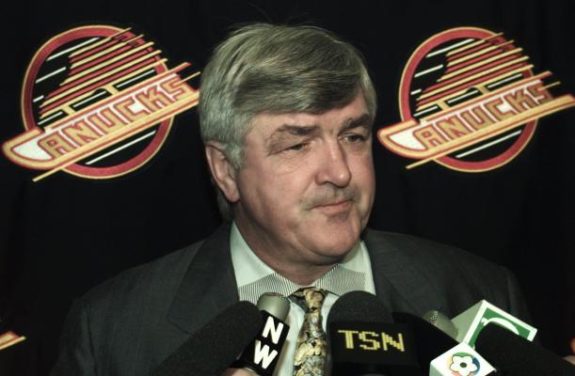
The Bure selection in 1989 came with controversy. A rule stated that he had to play a certain number of games to be drafted later than the third round. Most teams believed he did not meet these requirements. However, head scout Mike Penny found out he played some exhibition and international games to put him over the top, so they selected him in the sixth round. The league initially said the pick was illegal, but the Canucks appealed the ruling. The night before the 1990 NHL Entry Draft, the NHL reversed its decision, and Bure officially became a Canucks prospect instead of re-entering the draft.
When the calendar flipped over into 1991, Quinn headed for the bench and coached the Canucks for the final 26 games of the season. He was ready to bring Bure over from the Soviet Union for the start of the 1991-92 season, but that was met with more resistance. The Soviet Ice Hockey Federation called for Bure’s contract with the Central Red Army to prevent him from heading to North America.
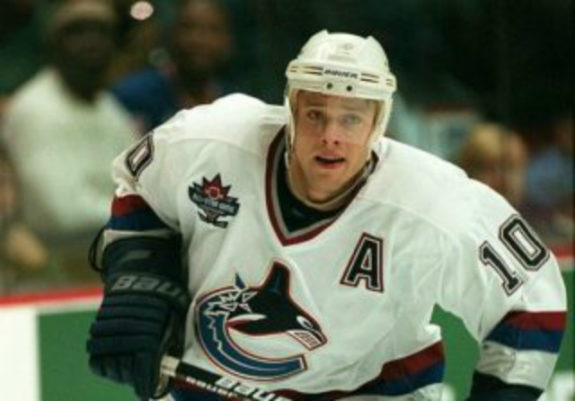
After a brief court case and a $250,000 settlement, Bure officially signed with the Canucks on Oct. 31, 1991. He scored 34 goals and 60 points in 65 games to win the Calder Trophy as the NHL’s top rookie. Quinn won his second Jack Adams Award for leading Vancouver to a Smythe Division title.
The Canucks entered the 1994 Stanley Cup Playoffs as the seventh seed in the Western Conference. They upset the second-seeded Calgary Flames in the opening round after going down 3-1 in the series. Next up, they dispatched the Dallas Stars in five games. This set up a meeting with the Maple Leafs in the Western Conference Finals. Greg Adams’ goal in the second overtime of Game 5 sent the Canucks to the Stanley Cup Final for the first time since 1992. However, their magical run ended with a Game 7 loss on home ice to the New York Rangers.
Related – Pat Quinn Leaves Lasting Legacy in Vancouver
Quinn gave up his coaching duties the following offseason to focus on his front office jobs. New ownership eventually came into the picture, which led to his dismissal on Nov. 4, 1997, after over a decade as president and general manager.
Back to Toronto & a Legacy Cemented
In 1998, Quinn returned to where his NHL career started when he was hired as the new head coach of the Maple Leafs. He took them to the Eastern Conference Finals in his first season and had general manager added to his job description the following summer.
During the 1999 Stanley Cup Playoffs, Quinn started using phrases that are now standard vernacular in the NHL. He began referring to his player’s ailments as “lower-body” and “upper-body” injuries.
“It just came out of thin air,” Quinn recalled in 2014. “I was tired of being asked about injuries.”
On Aug. 29, 2003, he was relieved as general manager but remained as head coach. The Leafs replaced him with 36-year-old John Ferguson Jr., making him the youngest general manager in NHL history.
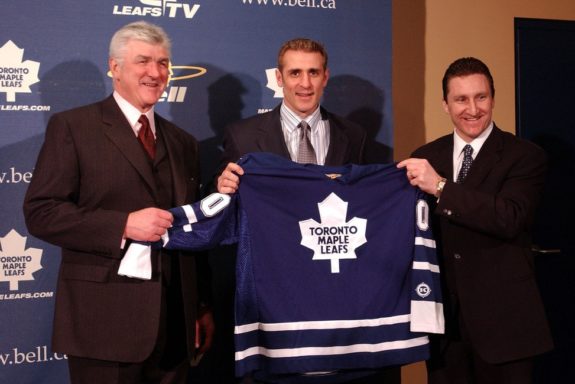
When the league returned following the lockout that wiped out the 2004-05 season, the Maple Leafs failed to qualify for the postseason for the first time under Quinn. Even though season-ending injuries to Eric Lindros, Ed Belfour, Jason Allison, and Alex Khavanov had a lot to do with coming up short, Quinn was fired at the end of the season. Some believe the dismissal had more to do with the friction between Ferguson and Quinn. Ferguson wanted to play the high-priced free agents he brought in, while Quinn favored the younger players he drafted as the general manager.
Quinn returned to the NHL when the Edmonton Oilers named him head coach on May 26, 2009. He only manned the bench for one season, going 27-47-8 and finishing in last place. He stayed on as a Senior Advisor of Hockey Operations through the 2010-11 season before retiring.
On-ice success wasn’t limited to the NHL. In 2002, Quinn led Team Canada to their first gold medal at the Winter Olympics since 1952. He took Canada to the final game of the 2006 Spengler Cup but fell short to HC Davos. He returned to the junior ranks by leading Canada to gold at the 2008 IIHF U18 World Championships. He repeated this feat at the 2009 U20 World Junior Championships with a team that featured future NHL stars Jamie Benn, Jordan Eberle, Alex Pietrangelo, P.K. Subban, and John Tavares.
Quinn was also a part-owner of the Vancouver Giants of the WHL in the latter stages of his life. He was part of another Memorial Cup win in 2007.
On Nov. 23, 2016, the hockey world lost Quinn when he passed away at Vancouver General Hospital after a lengthy illness. He was 71. He was inducted into the Hockey Hall of Fame in 2016.
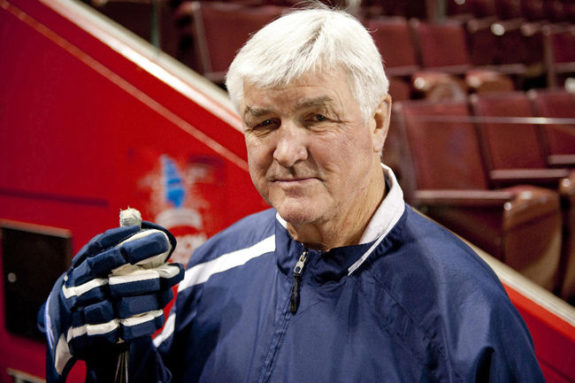
“Some people would measure their lives in the sports business by the trophies and the awards and the things they’ve won,” said Vegas Golden Knights president George McPhee in 2014. “But I think the real men can be measured by the impact they had on peoples’ lives, and Pat Quinn had a tremendous impact on a lot of peoples’ lives in terms of them being good players or good executives but even better people. Pat was one of the most phenomenal human beings I’ve ever known. A lot of us feel really, really lucky that we got to work for him.”
That is the legacy he left behind. It wasn’t the coaching awards or great draft picks; it was helping everyone who played for him or worked with him to be their absolute best.
